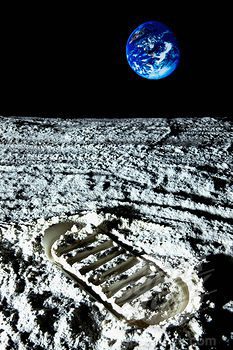One of the lessons of the First Fleet, which debarked in Australia in 1788, was that it might have been less challenging if there was a better understanding of in-situ resources. The First Fleeters thought they were coming to a New South Wales, quite literally. They very nearly starved to death.
Anyone planning to install a colony on the moon is going to have to make a similar assessment to ensure the supply of what will be their most important commodity – energy. And unless someone feels moved to ship a nuclear power station, or a series of fuel cells, piece by piece, the best solution might be taking advantage of the most abundant in-situ resource – ignoring its 336-hour-long night – the sun.
Research by a UNSW student Aaron Bonanno has concluded that solar thermal energy storage could be the best option for a future moon colony, and his paper has won him the award of best undergraduate paper at a prestigious space engineering conference hosted by the American Society for Civil Engineers in California.
“Generating sustainable power efficiently will be one of the largest technological hurdles to future exploration and colonisation of the moon,” says Bonanno, a student in UNSW’s School of Photovoltaics and Renewable Energy Engineering.
He said some of the technologies currently being explored – such as photovoltaic cells, nuclear energy and fuel cells – would require transporting heavy materials, which is prohibitively expensive.
“Our research is focussed on using as many resources as possible that are readily available in the lunar environment,” he said – something termed In-Situ Resource Utilisation (ISRU).
Solar energy provides an attractive option, but the challenge of ensuring a constant power supply remains, especially given the Moon’s 336-hour long night, during which temperatures plummet to bitter extremes.
Bonanno’s bright idea focused on storing solar thermal energy – heat collected from the sun that can be converted into electricity – in concrete blocks made from lunar soil, known as regolith.
To try and replicate the unique chemical and physical properties of Moon dust, Bonanno use the fine basaltic dust created from the crushing of rocks to make concrete aggregates at a quarry on the Central Coast.
By “baking” the powdery grey stimulant at 1,100 degrees Celsius, Bonanno created solid blocks with exceptional properties for storing thermal energy and showed that a reflective cover could insulate the blocks, allowing them to retain energy throughout the long lunar night.
As a bonus, he also showed that the bricks could be used as building materials for a future moon base that were strong enough to withstand meteorite impacts.
Which is great news for future lunar explorers, but possibly devastating for Victorian premier Ted Baillieu, who will now have to find another export market for his state’s brown coal reserves.







